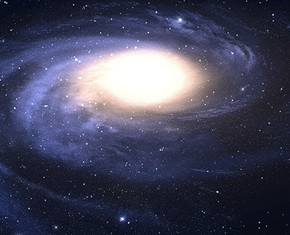The views expressed in our content reflect individual perspectives and do not represent the authoritative views of the Baha'i Faith.
Do you believe in religion or science—or both?
The schism between science—a rational investigation of reality—and religion—a spiritual or intuitive investigation of reality—became consolidated in Western thought in the fourteenth and fifteenth centuries. This conflict is evidently no closer to being reconciled or repaired now than it was in the mid-nineteenth century when the battle seemed to reach a pitch with Darwin’s publication of On the Origin of Species by Means of Natural Selection, or the Preservation of Favoured Races in the Struggle for Life in 1859.
So long as neither realm of religious or scientific “learning” encroached on the territory of the other, the two approaches to the study of and admiration for reality could peaceably coexist in the same universe and even in the same universities. But when the findings or theories of one encroached on the territory of the other, then all was not so friendly and decorous. For example, when scientific thinkers such as Galileo and Copernicus threatened the theologically based vision of the cosmos posited by the church, ideological warfare resulted, along with more overt unpleasantness such as the Spanish Inquisition. Likewise, when Darwin began what has been called the “second Copernican Revolution” with his theory of the origin of human life as a scientific rather than a divine event, the battle between science and religion grew fiercer at every turn.
Now there is not much war going on, except for the occasional political volley at the “godlessness” of universities and the equally “godless” professors who are said to pervert the young minds of innocent youths that fall prey to scientific cynicism about religious views of creation, history, or the cosmos. But for the most part, science and religion seem relatively content to ignore one another’s existence, realizing that reconciliation is not possible so long as those who study physical reality refuse to admit into their universe the existence of (let alone the influence of ) a spiritual or metaphysical reality, while those who affirm a belief in spiritual reality have equal disdain for scientific study, except for the rather nice technology it provides (cell phones, computers, and high-definition plasma television sets).
But perhaps the most intriguing result of this long-time family feud is the capacity of individuals to assume both views simultaneously, relegating matters of religion to their inner life or to the social milieu of the cathedral, the church, the synagogue, the temple, or the mosque, while living their workaday lives in a world described and defined by technology. Consequently, the disintegration in our study of reality is tacitly responsible for the lack of integration in our personal lives.
But there is a religion which affirms that these two realms of study need not be in conflict and that our perception of reality need not be fragmented or compartmentalized. This religion does not advocate an enforced reconciliation, nor does it propose some sort of grand synod or conclave in which scientists and theologians could work out their differences.
Why Baha’i?
It is a foundational thesis and essential belief of the Baha’i Faith that reality is one integral system that possesses both outer, visible, or physical properties, and also unseen, metaphysical, or spiritual properties. The Baha’i teachings assert that once the integration of reality is properly understood, students of the physical properties of reality and students of the spiritual dimension can realize that their longstanding feud was needless, that all this time they have been looking at the same reality from different perspectives:
Inasmuch as He, the sovereign Lord of all, hath willed to reveal His sovereignty in the kingdom of names and attributes, each and every created thing hath, through the act of the Divine Will, been made a sign of His glory. So pervasive and general is this revelation that nothing whatsoever in the whole universe can be discovered that doth not reflect His splendor. – Baha’u’llah, Gleanings from the Writings of Baha’u’llah, p. 184.
Such a claim is delightful to hear but not so easy to prove. The distinction in the claims of the Baha’i Faith regarding this unity of reality is that the Baha’i authoritative texts offer substantial proofs of the validity of this assertion. But what is important to our discussion of theodicy and the justice and sensibleness of reality is this: If reality has indeed been created by an intelligent and well-meaning Deity Who loves us and cares about all of us individually, then the Baha’i proofs that purport to vindicate such claims would be well worth examining.
Such a study would be of particular value if it could help us come to terms with the perplexing problem of the existence of evil and injustice in a world created by this Benevolent Being.
Therefore let us begin our examination of the claims of the Baha’i Faith about physical reality being a logical expression of a Divine Creator by determining how the Baha’i teachings might respond to the inadequacies or incompleteness in the classic works that also attempt to reconcile a belief in God with the appearance of injustice or evil in God’s creation.
















Comments
Sign in or create an account
Continue with Googleor